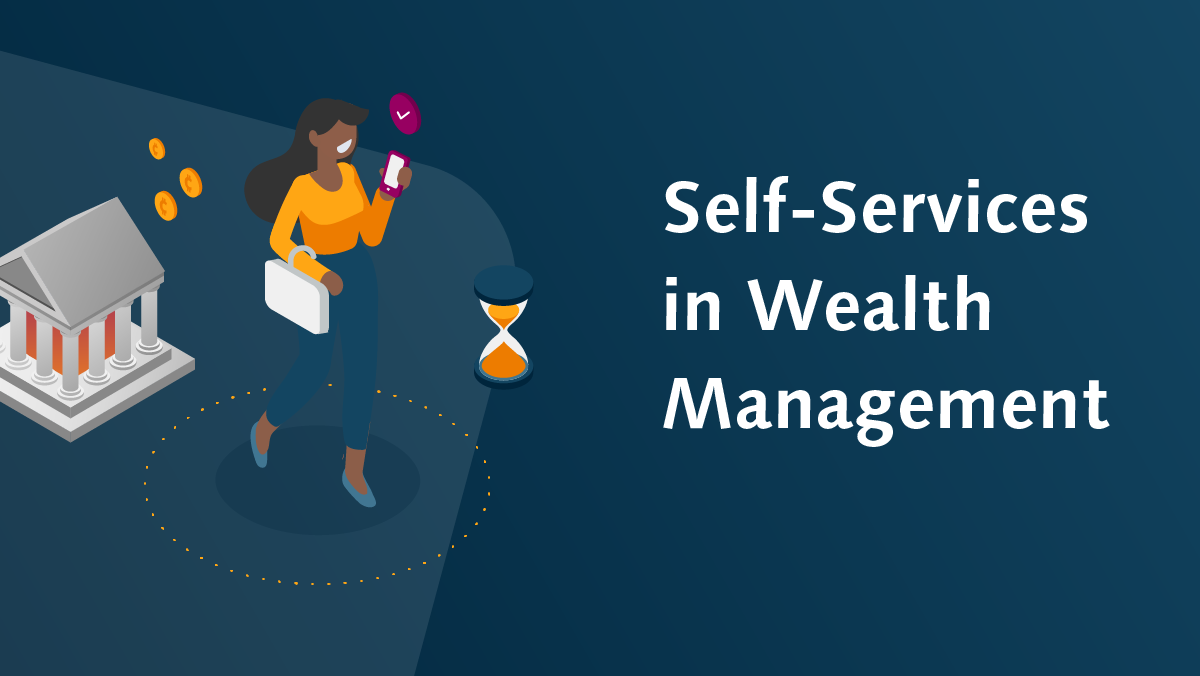
When we consider self-service tools for digital wealth and client portals, often the focus is on the functionality. This is, of course, very important; features such as updating an address save time for the customer and the financial institution, and those such as preferences for hard or soft copy statements or topics of interest aid in personalisation. Previously, wealth management firms have held back from wholesale self-service due to a fear of disintermediation, but understanding and anticipating clients’ needs can highlight the true value of the solution.
Making self-service invisible
Making self-service invisible means providing tools and resources within the client portal that help clients to help themselves. As well as providing relevant market updates as a resource and offering notifications when new resources are added, this could be built into the client portal itself.
For example, interactive account views and pages showing holdings that allow clients to drill down into the information and find relevant details are self-service options. This could be classed as invisible self-service because it isn’t necessarily related to a specific action, such as filling in updated contact details. Instead, it is something that is built into the user interface (UI) to anticipate and fulfill client requirements. Such functionality could be an alternative to a routine telephone or email enquiry and will help to make any follow-up conversations better informed.
An intuitive, personalised UI can help to offer the most relevant services and information via the client portal. The improved user experience (UX) doesn’t just make information more accessible; it can also help to strengthen the wealth firm’s brand by offering added value. This in turn weakens the fear that self-service digital wealth tools might cut the institution out of the equation.
Active self-service and digital onboarding
An example of more visible and active self-service is digital onboarding. The ability to upload and digitally sign documents, verify identity, save and return to an application, receive relevant information and contact an account manager can all be included within a digital onboarding journey. In this case, the client is more active than in the examples above, and it presents a very positive picture of a firm that puts clients in the driving seat while offering effective guidance and support.
Other examples of more active self-service include the opportunity to make payments, send messages securely via the portal or schedule an in-person meeting or a video call. The client portal can also be used to promote an exchange of information on investment goals, ESG preferences or tolerance to risk. These can all serve to strengthen the relationship between clients and account managers and provide a way to demonstrate the added value that the wealth firm delivers.
Digital self-service delivers premium client service in wealth management
As well as all the many benefits of an intuitive UI, a positive UX and many active self-service features can offer to clients accessing their account remotely, the same portal can be used to support client managers. Graphical dashboards can help to support discussions during meetings, and tools such as modeling “what if” scenarios and the route to different investment goals can be generated during the meeting and discussed in person. This gives a full audit trail of activities and means fewer follow up administrative tasks for the account manager – not to mention less paper for the client or prospect to wade through at home. All of this contributes to the significant ROI that digital wealth tools can deliver, alongside the strong brand equity.
If you are interested in learning more about modernising the digital onboarding, watch our webinar recording: Our experts unpack the challenge of digital onboarding for wealth management firms.




